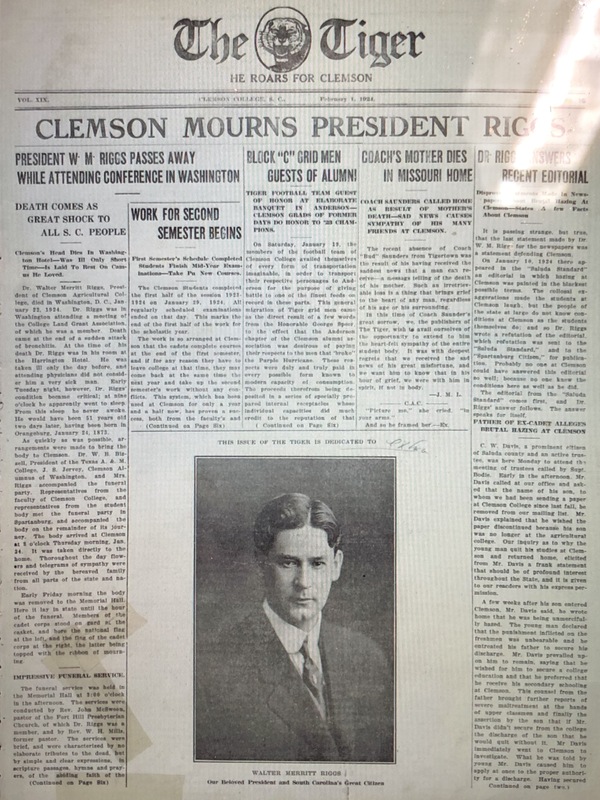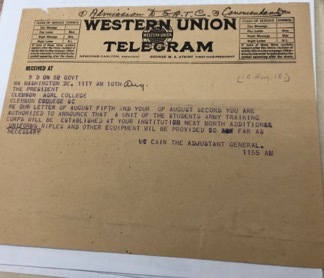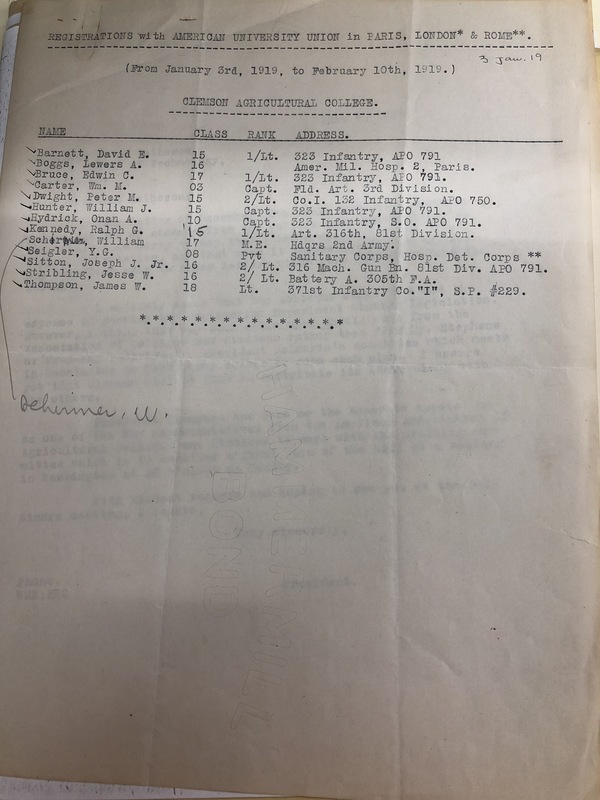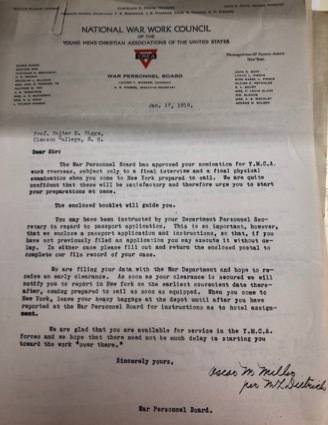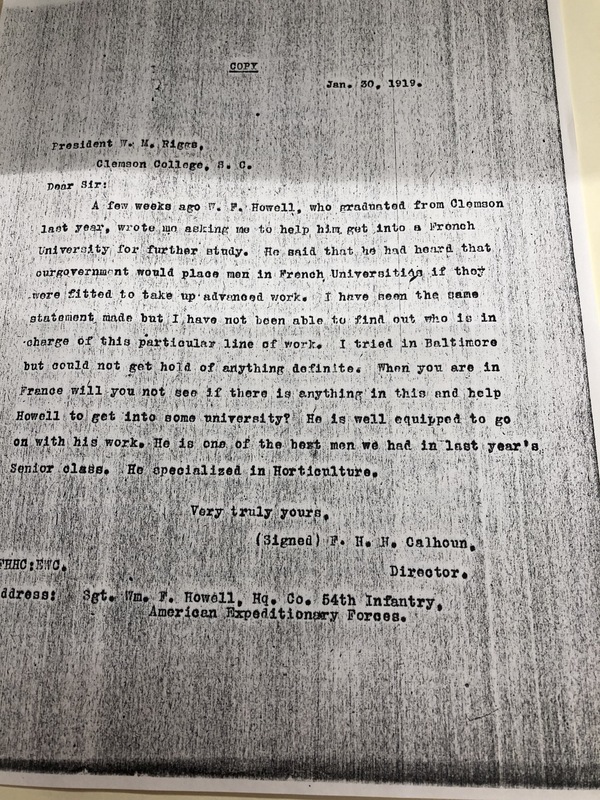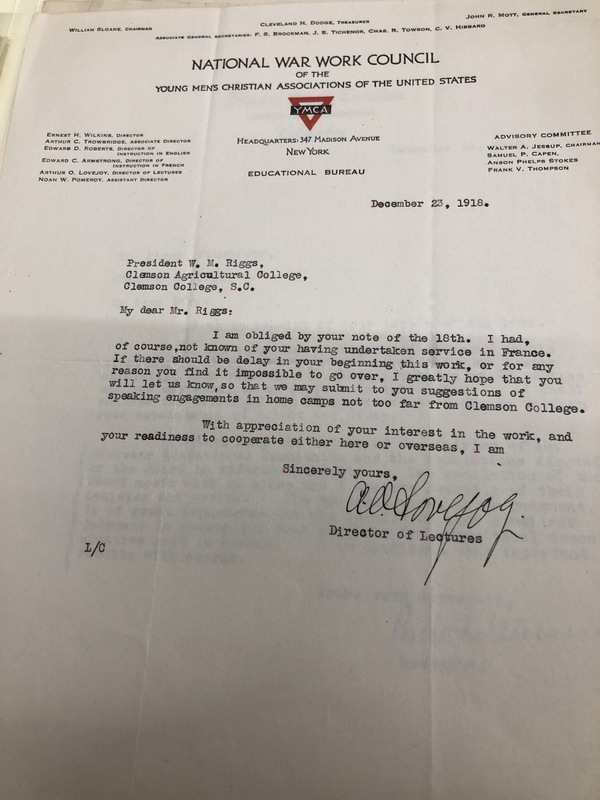Riggs' Legacy
Walter M. Riggs’ career at Clemson was one of the most influential of any president in the school’s history. In addition to leading Clemson College through a world war, he garnered national recognition for the school and was instrumental in establishing the curriculum that the school would use for years to come. Throughout the course of the war, Riggs was in contact with the presidents of other land-grant colleges throughout the country in order to gain enough support to pass the Smith-Hughes Act of 1917. The Smith-Hughes Act moved the specialized classes in one agricultural field (animal husbandry, plants, agricultural chemistry, and agricultural education) from the student’s junior years to their sophomore years (Reel, 214). Riggs was also a supporter of the Colored Normal Industrial Agricultural and Mechanical College of South Carolina, now South Carolina State University, located in his hometown of Orangeburg, South Carolina. Riggs was unique in his time for supporting the education of African Americans in the South (Reel, 214-15). Upon Riggs’ death on January 22, 1924, Robert S. Wilkinson, president of South Carolina State University stated that both he and the university lost a “dear friend” (Reel, 232). Facing growing financial issues with the fertilizer tax that the college required for revenue no longer being as profitable with the population of South Carolina urbanizing and farming becoming less common, Riggs worked to get the South Carolina state assembly to support Clemson College financially, starting in 1922, along with any profits made from the fertilizer tax (Reel, 216). The first non-white student to graduate from Clemson was also admitted under Riggs. Yukata “Sooky” Tsukiyama, a Japanese citizen and textile engineering student began classes in 1922 (Reel, 220).
Riggs was buried at Woodland Cemetery, becoming the first Clemson “servant” to be buried on campus (Reel, 232). Riggs Hall was built in 1927 and named in honor of the late president. It was added to the National Registrar of Historic Buildings in 1990. Walter M. Riggs is often regarded as the “father of Clemson football,” but his legacy as president goes far beyond the football field. He garnered national recognition for the university, secured the university’s finances for years to come, led the school through a world war, a global pandemic, and several walk-outs, and established the school as the heart of agricultural and industrial education in South Carolina.

